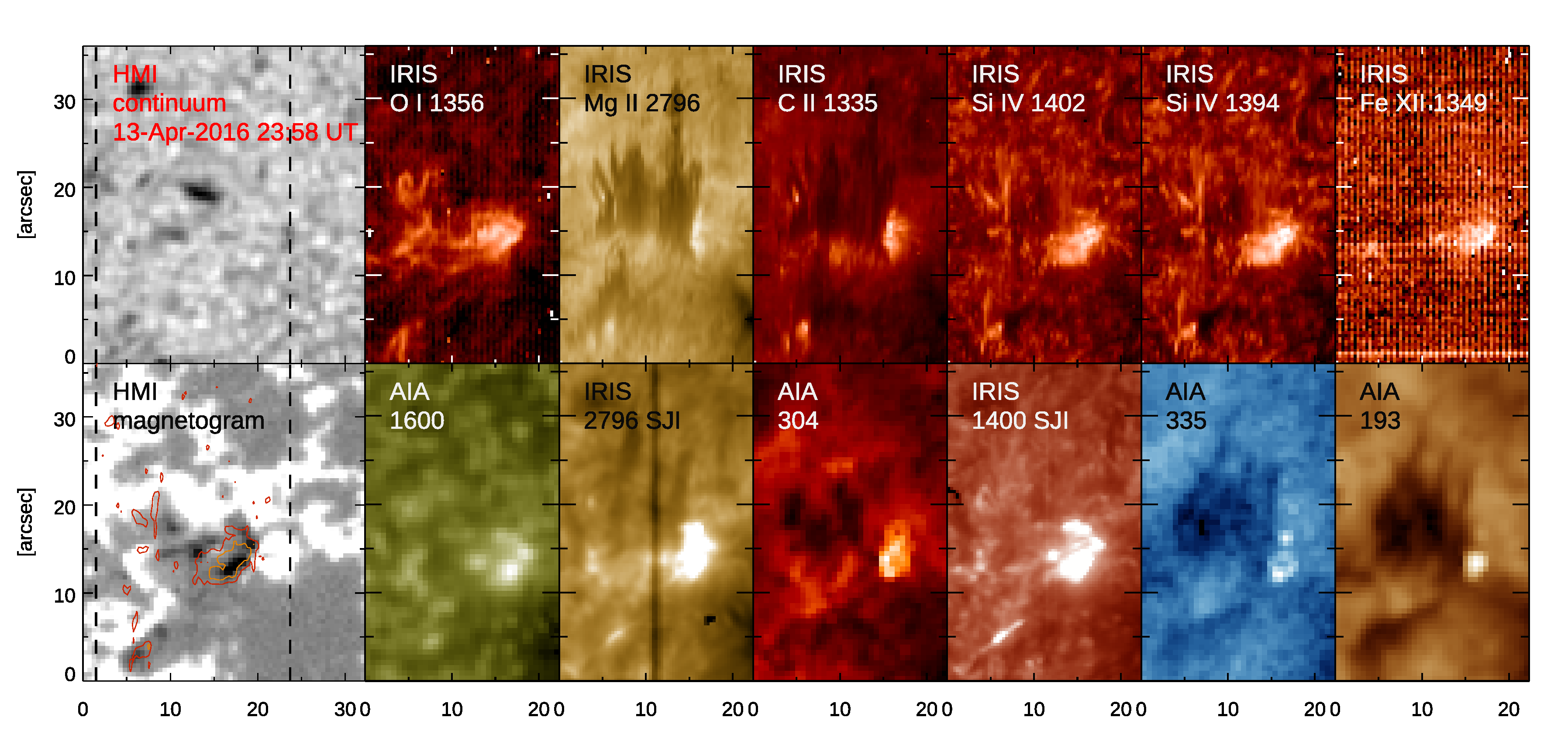Contrary to what one might think, the temperature in the solar corona is higher than in the surface. Why is that? Dr. Salvo Guglielmino (University of Catania, Italy), explains a possible mechanism.
 The figure shows simultaneous images from the Helioseismic and Magnetic Imager (HMI) and Atmospheric Imaging Assembly (AIA) on board the Solar Dynamics Observatory satellite, together with images from the IRIS satellite on the 13th April 2016. It captures the signatures of an “UV burst” in multiple layers of the solar atmosphere, from the photosphere to the corona, observed above opposite magnetic polarities (black/white colors in the magnetogram).
The figure shows simultaneous images from the Helioseismic and Magnetic Imager (HMI) and Atmospheric Imaging Assembly (AIA) on board the Solar Dynamics Observatory satellite, together with images from the IRIS satellite on the 13th April 2016. It captures the signatures of an “UV burst” in multiple layers of the solar atmosphere, from the photosphere to the corona, observed above opposite magnetic polarities (black/white colors in the magnetogram).
One of the most intriguing enigmas in the Sun is the high temperature of its outermost atmospheric layer, the corona. Although one would expect the temperature of the Sun to be lower the further away from the surface, the reality is that the solar corona is much hotter than the photosphere: between 1 and 3 million Kelvin degrees, compared to only about 6000 on the surface.
The recently discovered "UV bursts" may help explain this mystery. UV bursts are sudden and small (about 1500 kilometres) increases in ultraviolet light emission, which can be up to 1000 times brighter than their surroundings. They occur in regions where opposite magnetic polarities are close to each other: as the fields interact, their magnetic energy is converted into kinetic energy and heat. When the interacting magnetic fields are strong enough, the bursts heat the chromospheric plasma up to million-degree temperatures. As shown in the featured image, these events are observed at all wavelengths, from the chromosphere to the corona.
Thanks to its unprecedented view of the chromosphere, the Interface Region Imaging Spectrograph (IRIS) satellite has been invaluable in gaining insights about UV bursts. The European Solar Telescope, with its high spatial and temporal resolution, will allow us to further study their dynamics and to better understand their contribution to the heating of the Sun’s outer atmospheric layers.
